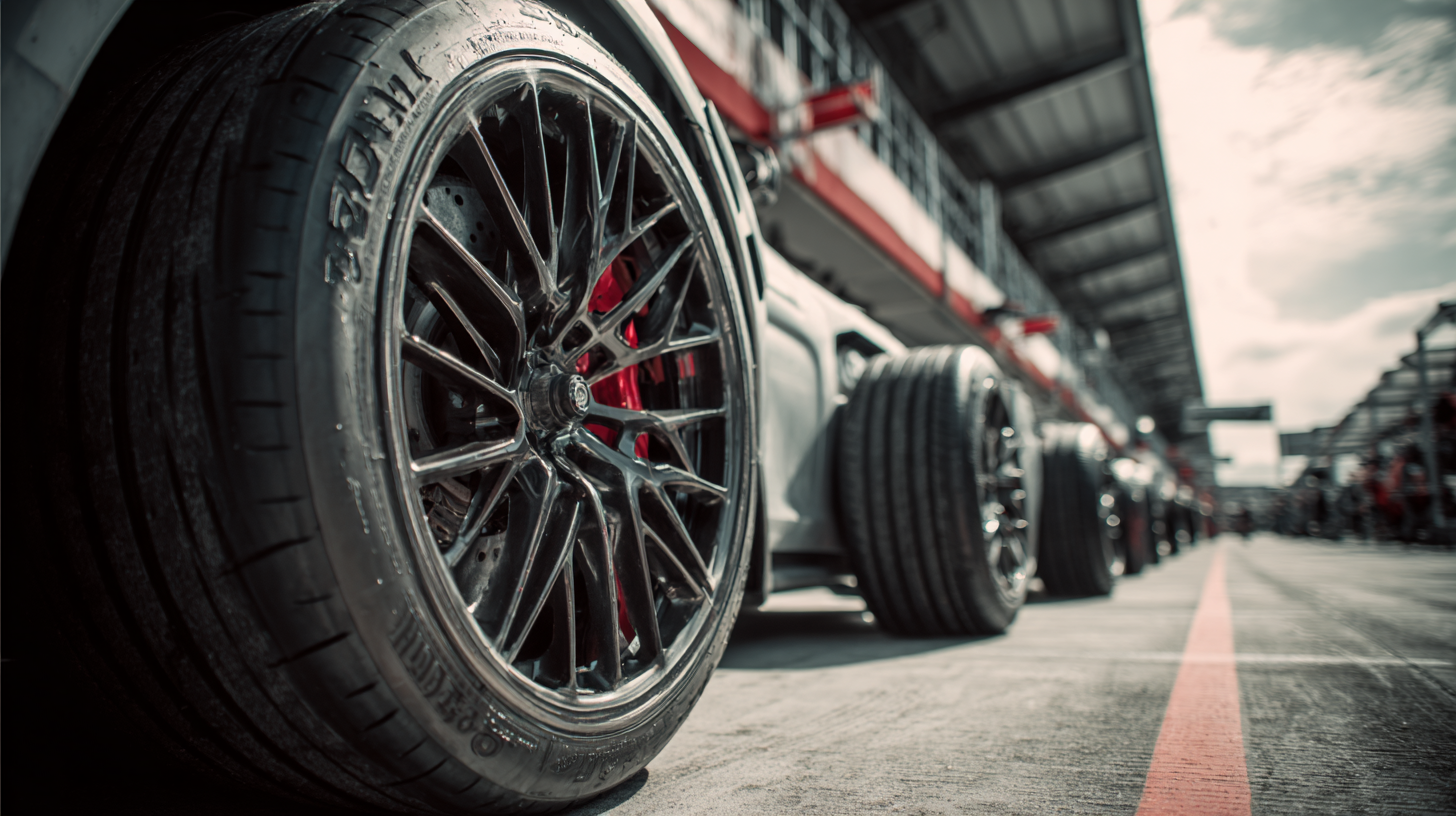When it comes to enhancing your vehicle's driving experience, selecting the right performance tires is one of the most impactful decisions you can make. Performance tires are designed to improve handling, grip, and responsiveness, offering a noticeable difference in how your car reacts on the road. Whether you're an avid car enthusiast or simply looking to upgrade your daily driver, understanding the various types of performance tires available and their unique benefits is crucial. In this ultimate guide, we’ll delve into the factors to consider when choosing performance tires, including tread patterns, rubber compounds, and tire sizes, all tailored to meet your specific driving needs. By unlocking your ride's potential with the right set of performance tires, you’ll not only enhance your vehicle's capabilities but also enjoy a safer and more exhilarating driving experience.

When it comes to enhancing your vehicle's performance, understanding the key differences between performance tires and standard tires is essential. Performance tires are specifically designed to provide better traction, handling, and responsiveness on both dry and wet surfaces. Unlike standard tires, which prioritize durability and fuel efficiency, performance tires feature a softer rubber compound that enhances grip, allowing for sharper cornering and improved braking distances. Their tread patterns are also optimized for maximum contact with the road, further contributing to enhanced performance characteristics.
Additionally, performance tires often come with a lower aspect ratio, meaning their sidewalls are shorter. This design offers more stability during high-speed maneuvers, making them ideal for sports cars and performance-oriented vehicles. In contrast, standard tires generally have a taller sidewall, which can help cushion the ride but may lead to less precise handling. Understanding these differences allows drivers to make informed decisions about tire selection based on their driving style and performance needs.
Whether you’re looking to improve the agility of your vehicle on the track or enhance your everyday driving experience, knowing the distinctions between these tire types is the first step in unlocking your ride's true potential.
When it comes to enhancing your vehicle's performance, selecting the right tires is crucial. Performance tires are designed to provide superior grip, handling, and stability. However, understanding tire specifications can be overwhelming. Key factors such as tread pattern, rubber composition, and sidewall stiffness play significant roles in how a tire performs. Tread patterns, for example, can either enhance traction on dry roads or offer better water evacuation during wet conditions, impacting safety and performance.
**Tips:** When choosing performance tires, prioritize your driving style and typical road conditions. If you often navigate tight corners and enjoy spirited driving, look for tires with a more aggressive tread design. Conversely, for highway cruising and wet weather performance, consider tires that feature enhanced water channels and softer compounds.
Another critical aspect to consider is the tire's speed rating and load index. These ratings provide insight into how well the tire can handle high speeds and heavy loads. Always ensure that the specifications exceed your vehicle’s requirements for optimal safety.
**Tips:** Before making a purchase, consult your vehicle’s owner manual or tire placard for manufacturer recommendations on size and specifications to guarantee a perfect fit and peak performance.
The composition of tires plays a crucial role in their performance characteristics, particularly in terms of grip. High-performance tires are typically made from specialized rubber compounds that enhance traction and responsiveness. According to a recent report from the Tire Industry Association, tires with a higher silica content can improve grip on wet surfaces by up to 15%, making them a popular choice for performance enthusiasts. This is due to the increased flexibility and surface area contact that silica provides, allowing for better adherence to the road.
Moreover, the tread design, in conjunction with tire composition, significantly influences grip levels. For instance, tires featuring a softer rubber compound tend to provide improved traction, especially in high temperatures, where harder compounds may struggle to maintain optimal grip. A study by the American Society for Testing and Materials highlighted that tires optimized for performance can reduce stopping distances by as much as 10% compared to standard options. Therefore, understanding tire composition not only helps in selecting the right performance tires but also enhances overall driving safety and experience.

When it comes to enhancing the performance of your vehicle, the importance of tread patterns in tires cannot be overstated. Tread design plays a pivotal role in determining how well your car handles on various surfaces. For performance cars, choosing the right tire means looking at specific patterns that cater to both traction and stability. A wider, more aggressive tread design helps in providing superior grip during cornering, allowing drivers to experience heightened control and responsiveness.

Tips: When selecting performance tires, consider a tread pattern that features larger, deeper grooves. This design helps channel water away, reducing the risk of hydroplaning during wet conditions. Additionally, look for tires with asymmetric tread patterns; these often combine different features on the inner and outer sections, enhancing versatility and improving stability in both dry and wet conditions.
Another critical aspect is the tire's compound. Softer compounds generally offer better traction but may wear out faster, while harder compounds tend to last longer but may sacrifice some grip. Understanding how tread patterns work with these compounds can aid in selecting the best performance tires to maximize both handling and longevity for your specific driving style.
When evaluating performance tires, understanding essential metrics and industry standards is crucial for making an informed decision. Key metrics include tread pattern, rubber compound, and wear ratings. The tread pattern affects grip and handling, especially in wet or dry conditions. A performance tire with an aggressive tread design can enhance traction, while a more streamlined pattern might improve fuel efficiency. Additionally, the rubber compound plays a significant role in tire performance, influencing flexibility, heat resistance, and ultimately, the tire's grip on the road.
Industry standards, such as the Uniform Tire Quality Grading (UTQG) system, provide valuable insights into tire performance. This system includes ratings for treadwear, traction, and temperature resistance, allowing consumers to compare different tires based on these critical factors. Furthermore, reviews and benchmarks from organizations like the Tire Rack or Consumer Reports can offer real-world performance feedback, ensuring that the chosen tire not only meets industry standards but also aligns with individual driving needs and preferences. Therefore, taking the time to evaluate these metrics and standards is essential for unlocking your ride’s true potential.
| Tire Type | Tread Pattern | Wet Grip Rating | Dry Grip Rating | Rolling Resistance | Noise Level |
|---|---|---|---|---|---|
| Performance Summer | Asymmetric | A | A | Low | Quiet |
| All-Season | Symmetric | B | B | Medium | Moderate |
| Performance Winter | Directional | A | B | High | Loud |
| Track/Competition | Semi-Slick | AA | A | Very Low | Very Loud |
Reignite your passion for driving with Yokohama tires and experience the superior performance you deserve.